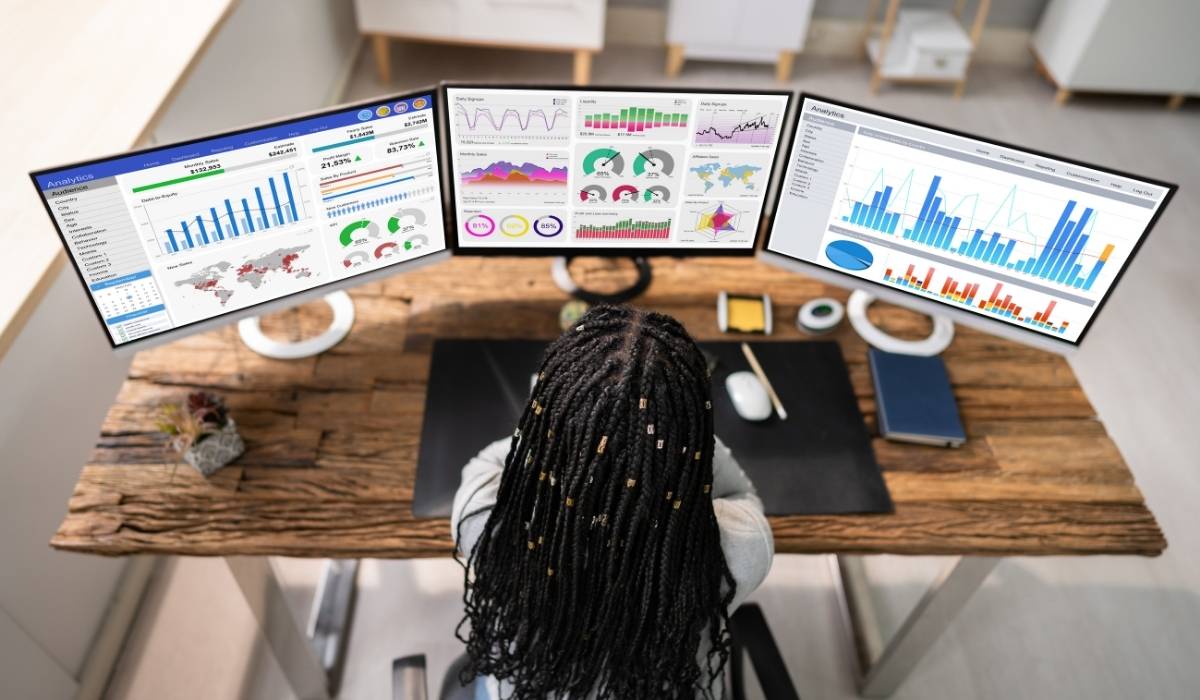In the digital age, data is more than just numbers—it’s insight, direction, and power.
For businesses trying to stand out in a saturated local market, understanding how web analytic data enhances local SEO campaigns is a game-changer.
From identifying high-performing keywords to uncovering user behavior patterns, analytics serve as the compass guiding strategic decisions and measurable growth.
Businesses no longer need to guess what their audience wants.
Instead, they can use data to tailor their content, refine targeting, and make better marketing decisions.
The power of this data lies in its precision and ability to provide clarity in a complex digital landscape.
This in-depth guide will explore how web analytic data contributes to stronger local SEO campaigns, improves local visibility, drives targeted traffic, and ultimately boosts conversion rates for businesses aiming to dominate their geographic markets.
We’ll dive deep into the core metrics, advanced applications, and how expert analysis converts raw data into actionable growth strategies for your local business success.
What Is Web Analytic Data?
Web analytic data refers to the information collected about how users interact with your website. This includes:
- Page views and bounce rates
- User session duration
- Geographic location
- Traffic sources (organic, direct, referral, etc.)
- Click-through rates and goal completions
These data points are essential for businesses running local SEO campaigns, helping refine strategies based on real-time user interactions and trends.
When properly interpreted, this data reveals what users are looking for, how they behave online, and where friction points occur.
It acts as your digital blueprint, showing strengths and weaknesses that can be optimized for better engagement and search performance.
Why Local SEO Campaigns Rely on Analytics

Unlike traditional SEO strategies that target broad search terms, local SEO campaigns focus on geographic-specific queries such as “near me” or city-based keywords.
These searches reflect immediate intent and high local relevance.
Web analytic data ensures these campaigns remain effective by:
- Tracking local keyword performance
- Monitoring user location and engagement
- Analyzing search behavior trends within a specific region
- Measuring the success of local landing pages
By evaluating traffic patterns, bounce rates, and conversion paths, you can adjust your strategy to align with what your local audience truly needs.
This level of detail provides the groundwork for sustainable growth in competitive local markets.
Key Metrics That Drive Local SEO Optimization
Understanding which analytics matter most is crucial.
Here are several key metrics to focus on for campaign effectiveness and growth potential:
Organic Search Traffic by Location
This metric shows how many users find your site via search engines in your target region.
Monitoring this helps determine if your local SEO campaigns are bringing the right audience.
By narrowing in on the geographic sources of traffic, you can refine keyword strategies and better allocate content to match local search intent.
This builds stronger visibility where it matters most.
Bounce Rate on Local Pages
High bounce rates on local landing pages may indicate irrelevant content or poor UX.
Optimizing these pages based on web analytic data can increase engagement.
Analyzing bounce behavior also reveals friction points like slow-loading pages or poorly aligned messaging.
Small adjustments based on this data often yield significant engagement improvements.
Click-Through Rate (CTR) for Local Listings
A strong CTR on Google Business Profiles or local pages signals that your title tags and meta descriptions are effective.
Low CTRs can be fixed by adjusting copy and calls-to-action.
Tracking CTR trends helps identify what draws clicks from search engine results and allows you to refine headlines and metadata for greater local impact.
Mobile vs. Desktop Behavior
Local searches are often done on mobile.
Reviewing mobile performance in your web analytic data allows for optimized mobile-friendly design and speed.
Pages that perform well on mobile are prioritized by search engines and appreciated by users.
Mobile analytics also show differences in browsing behavior, offering key insights to improve user journeys.
Geo-Specific Audience Insights
With web analytic data, businesses can assess where their users are located in real time. This includes:
- Heat maps showing regional traffic spikes
- Location-based goal completions
- Tracking conversions by zip code or neighborhood
These insights help fine-tune local SEO campaigns by zeroing in on the most profitable and engaged geographic segments.
Knowing which areas respond best to your content allows for focused marketing efforts.
It also uncovers untapped opportunities—areas where interest is rising but conversions haven’t yet followed, allowing timely strategy shifts.
Keyword and Content Strategy
Your content strategy should evolve based on performance analytics. Web analytic data provides:
- Top-performing local keywords
- Content that retains users longer
- Pages that lead to conversions
Using this data, businesses can craft more targeted, value-driven content.
Knowing which queries drive traffic and conversions allows for smarter resource allocation.
Content that aligns with high-intent local keywords often outranks competitors and sustains long-term organic visibility.
Continuously optimizing based on real-time insights ensures ongoing relevance and growth.
Behavior Flow and Funnel Analysis
By studying how users navigate through your site, you can:
- Identify local content bottlenecks
- Improve internal linking structure
- Detect where users drop off in the conversion funnel
This leads to improved navigation, better retention, and increased local conversions.
Web analytic data allows you to observe each user journey and spot inefficiencies.
By resolving dead ends and improving CTAs on key funnel steps, businesses increase the likelihood of turning a visitor into a customer.
Every click becomes an opportunity for enhancement.
Conversion Tracking for Local Goals
Whether it’s phone calls, form fills, or store visits, setting up goal completions specific to your local SEO campaigns gives you a direct look into campaign ROI.
Web analytic data helps:
- Assign conversion values to local actions
- Test and refine CTAs for each local page
- Allocate budget to the highest-performing areas
Tracking actual outcomes—rather than just traffic—enables clearer measurement of success.
You can identify which services or offers resonate most in different regions and invest accordingly.
This leads to smarter decisions, lower waste, and stronger local marketing ROI.
Integrating Google Business Profile Insights
Google Business Profile (GBP) metrics should be merged with your core analytics. This includes:
- Map views vs. website clicks
- Direction requests
- Calls from listings
When integrated, GBP metrics and web analytic data provide a 360-degree view of your local SEO campaigns.
These insights reveal the offline actions driven by your online presence.
Understanding how users engage with your local profile allows you to optimize hours, descriptions, Q&As, and reviews—all of which impact local ranking and trust.
Real-Time Adjustments and A/B Testing
Analytics empower you to test strategies and make changes dynamically.
With the right tools, you can:
- Run A/B tests on headlines or layouts for local pages
- Monitor test results and pivot quickly
- Make informed decisions rather than assumptions
This data-led agility lets businesses outperform slower competitors.
Testing different CTAs, imagery, or keyword placements offers constant learning.
Real-time feedback loops ensure you stay ahead of algorithm updates and shifting consumer behavior, keeping your local strategy fresh and optimized.
Competitor Benchmarking and Industry Trends
Analytics platforms like Google Analytics 4, SEMrush, or Ahrefs allow for competitor benchmarking. With this, you can:
- Compare traffic trends in similar regions
- Identify keyword gaps
- Understand backlink profiles of local competitors
This context enriches your web analytic data and powers more competitive local SEO campaigns.
By analyzing what your competition ranks for, and where they fall short, you uncover valuable gaps to exploit.
Trend analysis also ensures your campaigns remain current and aligned with evolving industry norms.
Enhance Your Strategy with TopLine Media Group
At TopLine Media Group, we specialize in performance-driven local SEO campaigns powered by real-time web analytic data.
Our team doesn’t just track data—we translate it into actionable results:
- Custom local landing pages
- Geo-optimized content
- Behavior-based strategy refinement
- Mobile and voice search optimization
We use analytics as our foundation to build better search visibility and long-term engagement.
Our specialists dive deep into your data to create tailored solutions that resonate with your specific market.
With our help, your local visibility doesn’t just increase—it thrives.
Why Choose TopLine Media Group?
- Transparent reporting using industry-leading tools
- Data-backed decisions, not guesswork
- Local SEO specialists with deep geographic targeting knowledge
- Continuous performance monitoring and strategy iteration
Our commitment to strategic data interpretation means your campaigns never stagnate.
We refine, measure, and optimize constantly—giving your business a competitive edge in local search markets.
Whether you’re a single-location startup or a growing franchise, we build scalable systems tailored for success.
Call to Action
Ready to transform your local SEO campaigns with powerful web analytic data?
Let TopLine Media Group show you how data can turn your local strategy into a success story.
Contact us today to schedule a free analytics review and discover the insights your website has been hiding.
Don’t just collect data—use it to dominate your local market. Let’s grow, together.
FAQs
What is web analytic data, and how does it help SEO?
Web analytic data includes visitor behaviors, traffic sources, time spent on site, and more. It helps businesses refine content, optimize user experience, and understand what’s working. For local SEO, it specifically helps identify which geographic areas are driving traffic and engagement.
How often should I analyze web analytic data for local SEO?
Ideally, analytics should be reviewed weekly or at least monthly. Frequent analysis helps detect early trends, identify issues quickly, and make data-informed decisions that improve local rankings and ROI over time.
What’s the difference between local and general SEO analytics?
Local SEO analytics focus on geographic-specific user behavior—like where users are searching from or what local queries they use—while general SEO is broader and more topic-based. Local metrics help optimize Google Business Profiles, location pages, and nearby search results.
Can web analytic data show which keywords drive local traffic?
Yes. Tools like Google Search Console and GA4 show which search terms lead visitors to your site and where those visitors are located. This insight allows businesses to optimize content for better keyword targeting in local markets.
How does bounce rate affect local SEO performance?
A high bounce rate on local pages may suggest that the content doesn’t match user intent or there are usability issues. Reducing bounce rates through better content and design improves engagement, which is a positive signal for local search rankings.
What role does mobile analytics play in local SEO campaigns?
Most local searches happen on mobile devices. Mobile analytics help businesses ensure that their sites load quickly, are easy to navigate, and convert well on smaller screens—all critical to succeeding in mobile-first local search results.
Why is it important to integrate Google Business Profile data with web analytics?
GBP insights—like map views, direction requests, and call clicks—offer a complete view of how users interact with your business listings. When paired with web analytic data, they provide a clearer picture of the full user journey.
How can TopLine Media Group improve my local SEO using web analytic data?
TopLine Media Group uses web analytic data to craft targeted, performance-driven local SEO campaigns. We analyze your traffic, optimize your location pages, and test continuously to ensure every strategy is tailored to attract and convert local customers.



